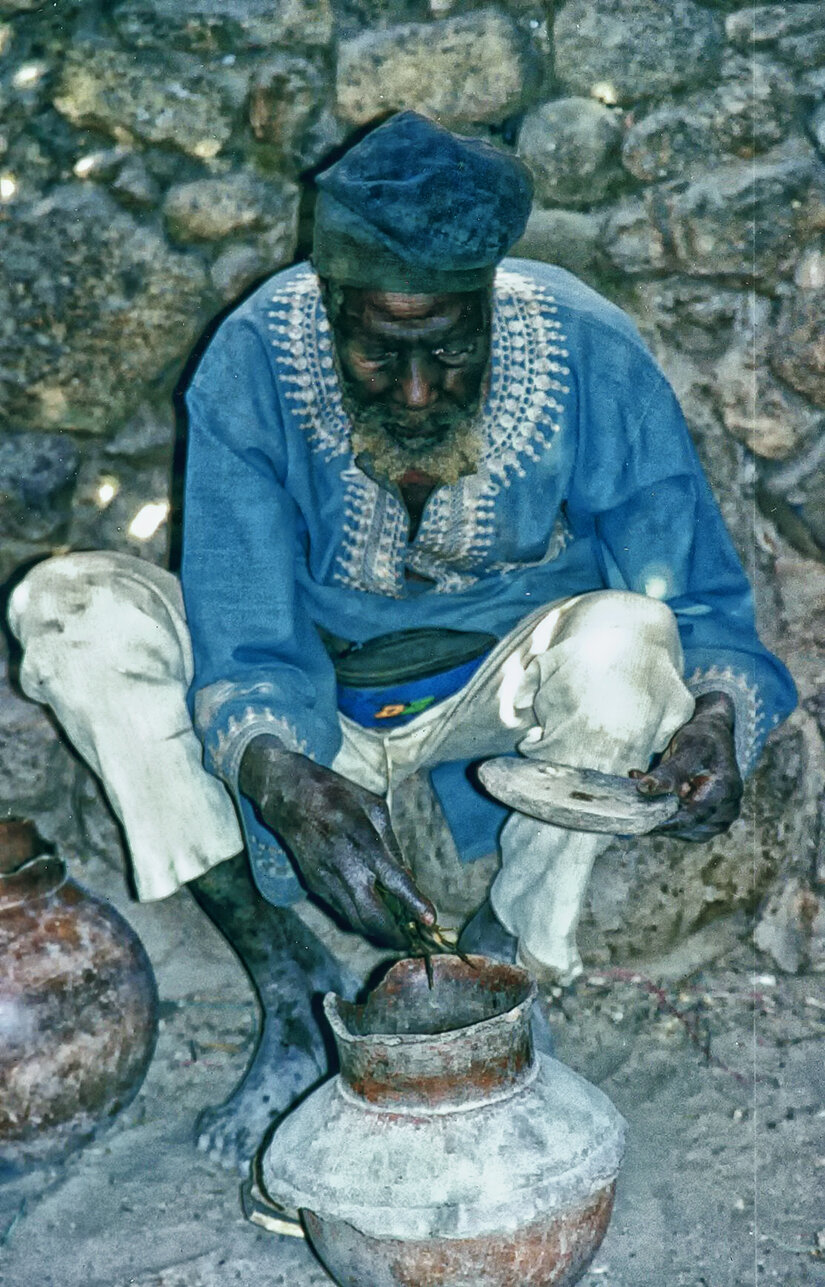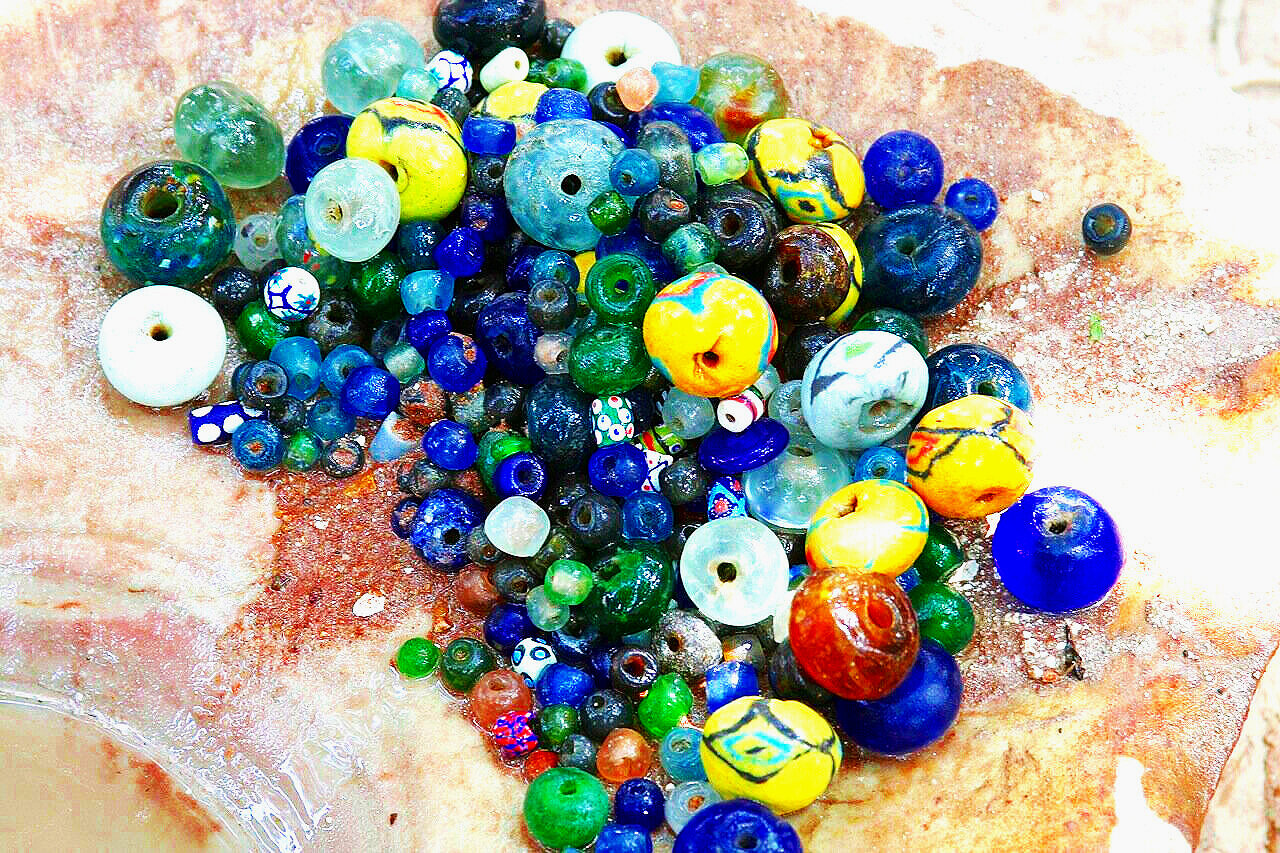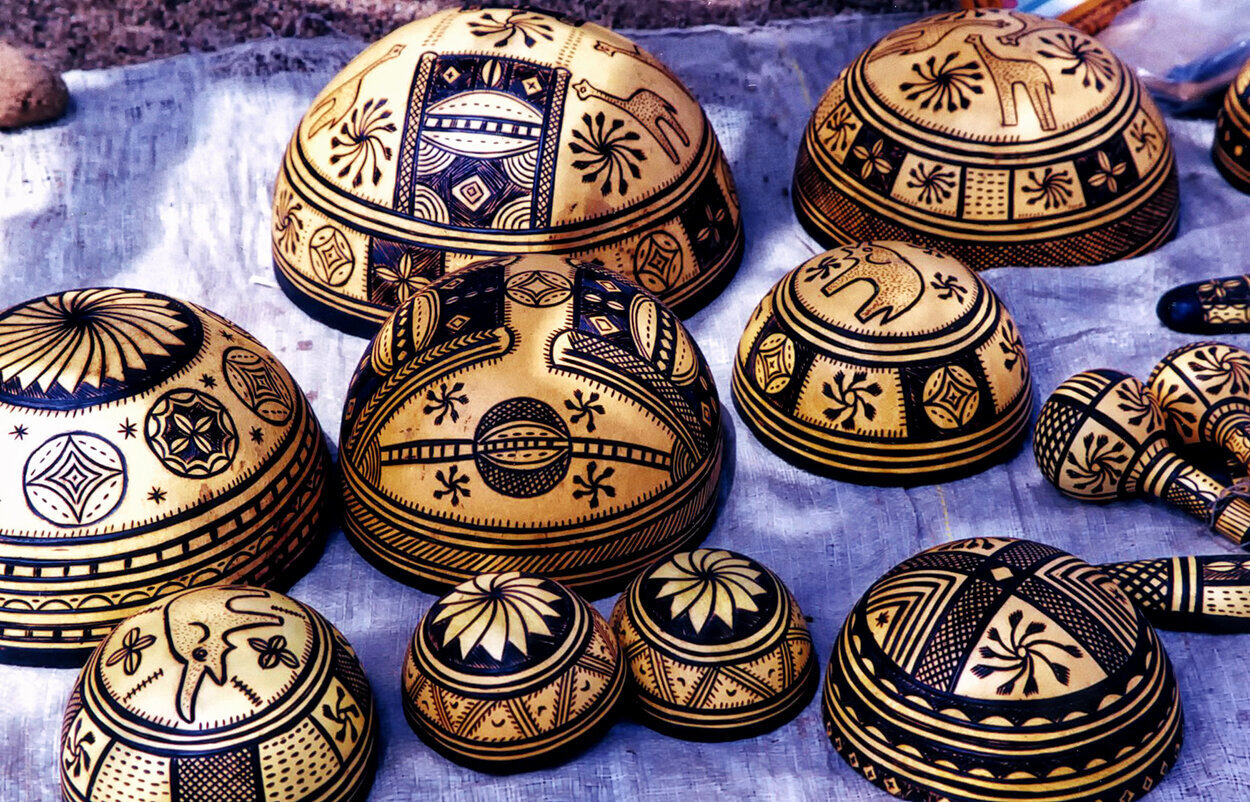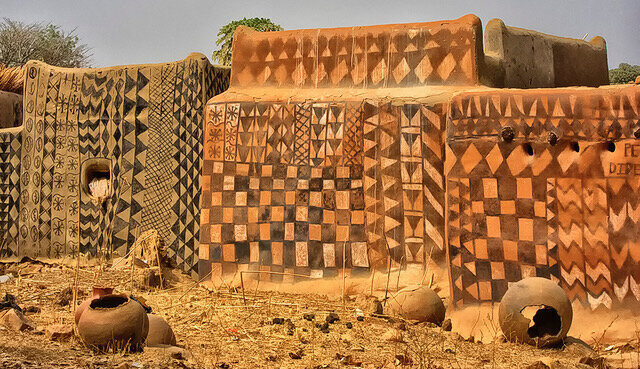
West African Calabash Bowls
Journey with a quest: Mindiff, Cameroon
From the window seat of our 44-passenger plane, I stared down at the eerie landscape of Rhumsiki, Cameroon. The tips of million-year-old volcanic plugs seemed to stick straight up like narrow fingers protruding from the sub-Sahelian plain. Neem and mango trees cast a broad umbrella of shade along the dusty untarred roads. Walking paths skirted planted fields of corn, red and white millet, and sorghum, and hectares of what appeared to be pumpkins or squash snaked along the dry plain. Women balancing huge earthen water jars or large calabashes on their heads sauntered single file along the road, their striking carriage developed since childhood.
This otherworldly landscape was one reason I wanted to visit Rhumsiki, but I was also drawn to this remote, distant land to see the famous calabash makers at the royal village of Mindiff. As it was early morning, I was anxious to see the market before heading to meet the calabash artisans.
Calabash bowls and the tailors who preserve them
The Rhumsiki market is a fascinating place with vendors selling millet beer, tailors making clothes and mending calabash bowls, using thin wire to suture the cracks, which look like zippers when finished, and a renowned witchdoctor. Tall elegant women wrapped in colorful head scarves gathered to haggle over the prices of millet, corn and peanuts. Millet beer vendors ladled homemade brew into small calabash bowls for men who gathered for a break during the day. Some millet beer bowls were too broken to be mended, so the tailors sold these pieces to anyone who would buy them in the market. I quickly snapped up three repaired bowls that still retained the smell of millet beer and had a soft patina from years of use. Not far away was a woman selling the doughnut-shaped thatch rings used by women to carry large calabash bowls on their heads for balance.
Not far from the market was the witchdoctor who kept a crab in a clay pot filled with stones, wood and clay shards. When a healing service was requested, he removed the crab from the pot, and looked at the placement of the stones, wood and clay for answers as to how to cure the sick person.
The witchdoctor, considered the wisest person in the village, uses a crab in his healing rituals.
Mindiff: where the best calabashes in Cameroon are made
After browsing the morning market, I was off to Mindiff to see how calabash was cultivated and fashioned into this unique utilitarian vessel. As Mindiff was under the control of a young traditional chief, he had given me permission to visit the artisans. Up till then, I had purchased calabash bowls only in the markets, but here I could observe master artisans creating them. How amazed I was when I walked into the village and noticed the most elaborately decorated bowls I had ever seen.
Singed patterns
Men and women were sitting cross-legged under a large shade tree, close to a fire where knives were being heated for singeing designs. This burnt design work was incredibly intricate, with patterns covering both the inside and outside of the calabashes of all sizes. The more complex bowls featured scenes of everyday life: animals, farming, stars, rivers, the moon, and mountains. These bowls were also the largest I had ever seen – a few more than 20 inches in diameter. The artisans were selling the large decorated bowls for about $3.00 at the time of my first visit, back in 2002. While talking to the artisans, I learned there was a Nigerian village not far from there where I could see other intriguing calabashes, which men and women dyed purple and wore as hats as protection from the sun.
Singed design calabash Cameroon
Calabash artisan in Camaroon
From gourd to bowl
Calabash gourds (Lagenaria siceraria) grow on a vine on the ground or on a tree (Crescentia cujete). The gourds are picked in late fall and left in the hot sun to dry. By early January or February it’s time to halve them and clean out the seeds to create calabash bowls. Care must be taken to avoid cracks during the cutting. (Older women specialize in mending the bowls using metal fasteners or heavy thread, which look like sutures when sewn.) Calabash bowls are sacred and are never thrown away.
Once a bowl is washed and dried, a white powder of kaolin is applied if the bowl will be used in a ceremony for purification of virgin girls or for a dowry gift. Afterwards, the artisan will decorate the bowl with geometric figures or other motifs with various meanings. The designs are usually taken from nature: trees, flowers, animals, and grasses are used most frequently. Sometimes the bowl is left unadorned, especially if it is a dowry gift. Read more about calabash symbols here.
Calabash tree in Senegal (Crescentia cujete)
Removing calabash seeds with small knife
Calabash washed in kaolin
Mending calabash with needle and cotton thread












